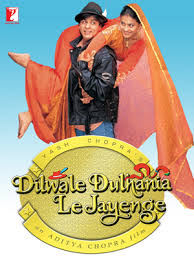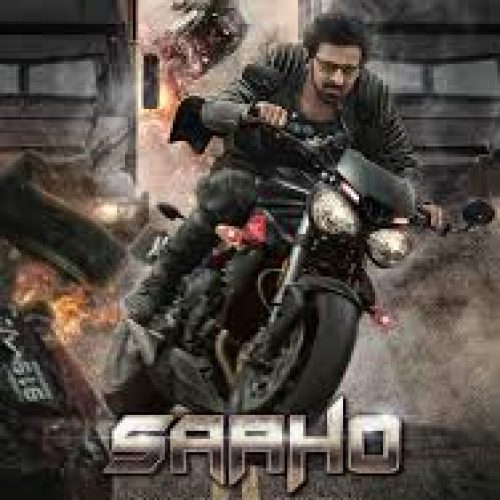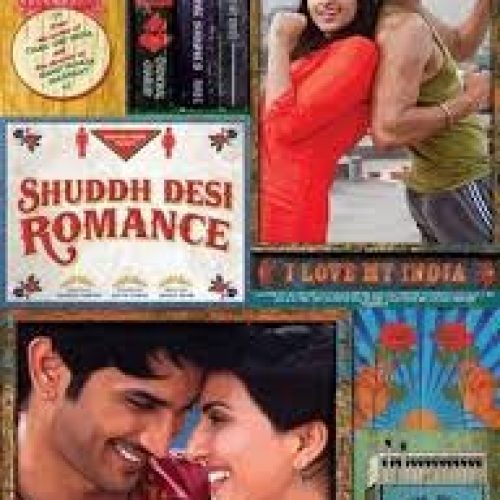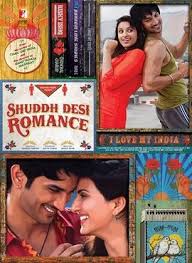Few love stories have achieved the iconic status that this one holds in the heart of Indian cinema. Released in 1995, Dilwale Dulhania Le Jayenge, starring Shah Rukh Khan and Kajol, is more than just a film; it’s a cultural phenomenon. Set against the backdrop of London and the picturesque landscapes of Switzerland, the movie is a romantic drama that expertly blends tradition with modern values. Directed by Aditya Chopra, it’s a tale of young love that is at once dreamy, rebellious, and deeply rooted in family values. This timeless classic revolutionized the genre and continues to be cherished by audiences across generations.
The plot follows Raj (Shah Rukh) and Simran (Kajol), two non-resident Indians living in London, who meet on a European trip. Raj, a carefree and mischievous young man, and Simran, a traditional girl with deep family ties, couldn’t be more different. While Simran’s father has already promised her hand in marriage to his friend’s son back in India, Raj’s outlook on life is much more casual and carefree. Their journey through Europe brings them closer, but it is only after the trip ends that they realize the depth of their feelings for each other. The challenge? Winning over Simran’s strict father and overcoming the barriers set by tradition, all while keeping their love intact.
One of the standout aspects of this film is the chemistry between Shah Rukh and Kajol. Shah Rukh, as Raj, brings his usual charm and playful energy to the role, creating a character that is instantly likable despite his immaturity in the beginning. His performance transitions from the role of a cheeky flirt to a responsible man in love, who respects the cultural values that bind his and Simran’s families. Kajol, on the other hand, is exceptional as Simran, balancing her character’s internal conflict between duty and desire with grace. Her expressive eyes, especially in moments of emotional turmoil, convey everything the character feels without needing too many words. Together, they create magic on screen, their love story believable, heartwarming, and undeniably engaging.
Aditya Chopra’s direction is a masterclass in balancing modern romance with traditional values. While the first half of the film, set in Europe, is light-hearted and filled with youthful exuberance, the second half shifts to Punjab, where the story becomes more rooted in Indian family values and tradition. Chopra navigates this shift in tone seamlessly. The film’s message is clear: true love doesn’t defy tradition; it respects it. The decision to have Raj win over Simran’s family rather than eloping gives the story a grounded and relatable quality, resonating with audiences who value familial approval.
The music, composed by Jatin-Lalit, is another highlight of the movie. From the romantic “Tujhe Dekha To” to the foot-tapping “Mehndi Laga Ke Rakhna,” every song in the film has become iconic in its own right. Lata Mangeshkar and Kumar Sanu’s melodious voices enhance the emotional depth of the songs, making them timeless classics. The music does more than just add entertainment—it helps in storytelling. For instance, “Mere Khwabon Mein” beautifully captures Simran’s dreams of love, while “Ruk Ja O Dil Deewane” showcases Raj’s playful nature. The film’s soundtrack plays an integral role in conveying the emotions of the characters and elevating key moments in the narrative.
Visually, the film is stunning. The cinematography by Manmohan Singh captures the beauty of Europe’s landscapes and the warmth of Punjab’s countryside with equal finesse. The sweeping shots of Swiss mountains, yellow mustard fields, and traditional Indian homes give the film a grand, cinematic feel. Each scene is meticulously crafted, and the camera work complements the emotions being portrayed by the characters. The attention to detail in the visual storytelling helps immerse the audience in both the foreign and familiar settings of the film, creating a visually satisfying experience.
Costume design, too, plays a vital role in defining the characters. Raj’s casual, Western-style clothing in the first half reflects his carefree attitude, while his more traditional attire in the second half mirrors his acceptance of Indian values. Simran’s wardrobe also undergoes a transformation—from modern dresses during the Europe trip to traditional salwar-kameez once the story shifts to India. This visual progression of the characters’ clothing reflects their emotional journeys and growth throughout the film.
Editing by Keshav Naidu ensures that the film’s nearly three-hour runtime never feels too long. The pacing is smooth, with the film moving from one emotional high point to the next without lingering too long on any scene. The balance between comedic moments, dramatic tension, and romance is well-maintained, keeping the audience engaged throughout.
The theme of the movie revolves around love, not just between two individuals but between families as well. The central conflict is driven by tradition, parental expectations, and cultural values, all of which are handled with a deep sense of respect. The story asks a fundamental question: can love and tradition coexist? The answer, as the movie suggests, lies in patience, respect, and understanding. This is not a tale of rebellion but one of harmony between the old and the new, making it a refreshing take on romance.
In terms of special effects, the film doesn’t rely on any extravagant visuals. It doesn’t need to. The simplicity of the love story, combined with strong performances, evocative music, and stunning visuals, ensures that the movie stands out without the need for any over-the-top effects. The charm of the film lies in its heartfelt storytelling and the emotional connection it creates with its audience.
In conclusion, this film is a masterpiece of Indian cinema. It redefined the romance genre and set the template for countless love stories that followed. The blend of Shah Rukh’s charisma and Kajol’s heartfelt performance, along with Aditya Chopra’s direction, made for a cinematic experience that is both emotional and entertaining. The film’s message of balancing love with tradition continues to resonate, making it relevant even decades after its release. For anyone who believes in love, family, and the power of cinema, this movie is an absolute must-watch. Its enduring legacy is a testament to the fact that some stories are truly timeless.







